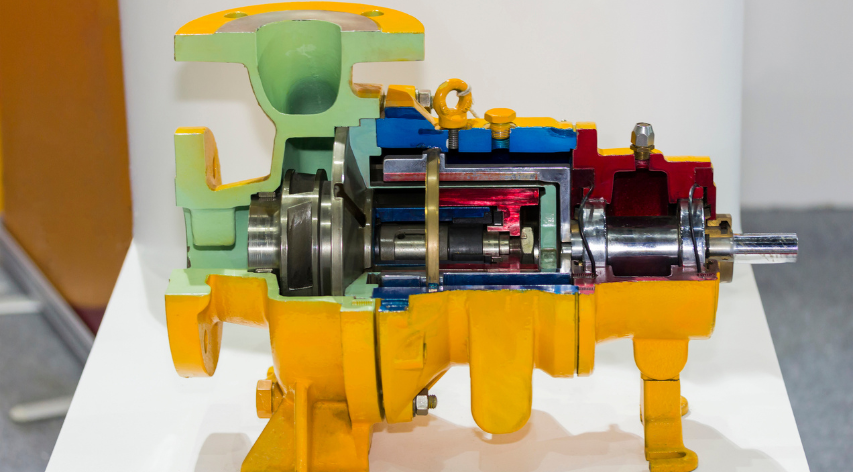The Difference Between ASME B31.3 Appendix X and EJMA Fatigue Curves for Bellows?


Bellows vendors will often quote two different cycle lives for their bellows. One is in accordance with ASME B31.3, Appendix X. The other is in accordance with the Standards of The Expansion Joint Manufacturers Association. The latter provides a significantly higher cycle life.
The EJMA bellows fatigue curve is a best fit curve based on data that was available, so it provides an expected average cycle life. The ASME curve was developed also using bellows fatigue data, but it provides design margins consistent with ASME pressure equipment codes.
Historically, designers have put large factors of safety on the number of design cycles for bellows, which was in part justified since there was no design margin in the EJMA fatigue curve. This would result in a margin of safety entirely dependent upon the designer, and could vary from large, to none. This was not a satisfactory condition for an ASME Code, so I developed the fatigue curve with safety factors that was put in ASME B31.3 Appendix X. When using this curve, it should be recognized that appropriate design margins are already included, and they should not also be included in the specified number of cycles. With bellows, design for an excessive number of cycles can unnecessarily compromise other design aspects, such as design with respect to internal pressure and column stability (resistance to squirm).
There is ongoing work to potentially revise the EJMA fatigue curve to include a factor of safety, which may be variable. This would be a very good development as it will lead to more uniform design practices and less confusion. When such a fatigue design basis is provided in the EJMA Standards, then it is very likely that the fatigue curve in Appendix X of ASME B31.3 will be removed, and ASME B31.3 will simply refer to the EJMA fatigue design rules, and may specify the required design margin if the revisions to the EJMA rules include a variable design margin.







Hi.
I just had a bellows mfr send me 2 sets of calcs, EJMA and ASME for a 16″ 316ss bellows. When he sent the EJMA calcs I noticed the allowable stresses (Sab) at room and design temp did not match ASME II, D. They seemed too high. I pointed this out to him and he resent it as an ASME calc and the stresses seemed to agree more with ASME II, D (lower). Why was the EJMA stresses higher? Was he fudging the first time?
Sa is the allowable stress from the applicable code. Perhaps there was confusion over which code was applicable. For example, was it ASME B31.3, or ASME Section VIII, Div 1. ASME II D would be Section VIII, not B31.3. And the allowale stresses can be different which different codes.
Hi. Thanks for responding. The design would be EJMA. I assumed he would take allowables from ASME II,D. The Sa he gave me, for 70F and 650 F were 26700 and 22200 respectfully. These do not match UNS-S31600 in either ASME II,D or B31.3. He claimed he used tensile values off the MTR in his EJMA calculations. Can this be true? Ejma uses Sym (yield strength at room from cert) not tensile. AND it does not explain why his allowables don’t jive. Per Ejma I need the allowable at design to check the calculated stresses.
Hi,
I have a question about the examination in Appendix 302.2.2.
The minimum control requirement of the bellow tube has to be X-ray or DPI prior to forming.
Is this a standard requirement for all types of application of expansion joints, or can this be a demand of a customer. I cannot imagine that for simple applications the bellow tube Always has to be x-rayed or DPI tested. EJMA does not mention this.
The examination is required for all metallic bellows per Appendix X of ASME B31.3. Note that the requirement of the examination is consistent with essentially using a weld joint quality factor of 1 in the pressure design of the bellows.
Hi Chuck,
We are carrying out life cycle test for round corner metallic expansion joints for flue gas systems for thermal power plants. These are made from carbon steel. We interpret from EJMA that only one prototype is required to validate the entire lot of expansion joint irrespective of size and Deep-Pitch configuration. Please let us know if our interpretation is correct?
Darshan
I have not seen the update in the ASME B31.3. The current edition of ASME B31.3 is 2014 and is later than your write up of July 2013. Is this to eventually happen or is there any alternate considerations on this.
Are there any exemptions given by EJMA to member manufacturers for the validation type tests for the estimated fatigue cycles for a given configuration of a bellow. I have a certain manufacturer that tells me that the manufacturer parameters that he uses in his calculation, is not based on testing but from their experience of manufacturing over the years.
That is the minimum required exam for any metallic bellows to be used in ASME B31.3 piping. There is not a lesser inspection option for expansion joints in less critical services.
There are changes proposed for the 2016 edition that would drop the appendix X fatigue curve and use new EJMA fatigue curves. These changes are not yet fully approved.
I am not aware of any exceptions to required validation testing. Experience in manufacturing bellows does not provide validation that the bellows a manufacturer are producing will have the same fatigue performance as those the EJMA curve is based on.
I have not reviewed the latest EJMA standard so cannot comment.
EJMA Section 4.12.1.6 calls out a 2.25 factor on column squirm and 1.75 factor on in-plane squirm built into equations 4-43 and 4-44, respectively. B31.3 calls out a 2.25 factor of safety on squirm pressure. How is this factor of safety to be taken into account when using the EJMA equations?
The 2.25 factor cited in B31.3 is the same factor that is cited in EJMA, so use of the EJMA equations for column squirm are acceptable for ASME B31.3 applications.